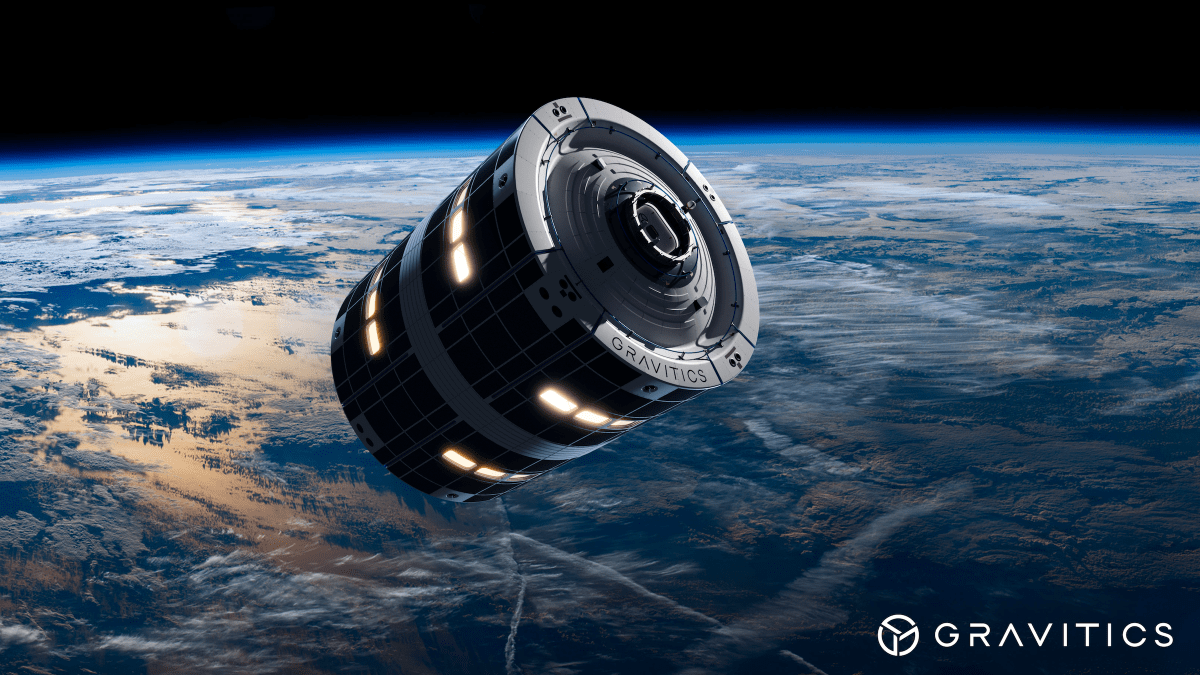
The space industry is all abuzz about how SpaceX’s Starship, Blue Origin’s New Glenn, and other heavy-lift rockets will change just about everything. One likely consequence is that spacecraft will get bigger — much bigger — as engineers work outside the constraints of low mass requirements.
There’s one problem: the current testing regime for spacecraft is focused on payloads 4 meters or less across. This poses a particular problem for companies like Gravitics, which is developing a line of space station modules that range from 4 meters all the way up to a massive 8 meters in diameter, with the hopes that these modules will become the building blocks for the next chapter in human space exploration.
So the company is getting proactive. Earlier this week, Gravitics announced it had signed a new agreement with NASA to address this dearth of testing and qualification methods for larger spacecraft. This gamut of qualification tests, which includes thermal, vacuum, vibration and acoustic testing, are carried out to ensure the spacecraft will survive the harsh launch environment and the even harsher environment of space. So developing tests and standards for large spacecraft will be essential.
This is especially true for the slew of private companies looking to populate low Earth orbit with the next generation of private space stations. Thanks to the larger capacity of these upcoming rockets, these teams will almost certainly depart from NASA’s method of assembling the International Space Station — which took 10 years and more than 30 missions — and instead launch a smaller number of very large modules.
“We joke that we want to be ready to provide modules from Stoke to Starship, from three meters to eight. We’re excited to work with groups like NASA to help ensure that we can build those capabilities and get them up to orbit, as soon as the launch vehicles are ready and the customers are ready to have them,” Gravitics CEO Colin Doughan said in a recent interview.
One example is vibration testing, which is designed to simulate the vibrations caused by launch and ensure the spacecraft can still function afterward. Smaller spacecraft are typically tested using shaker rigs, but these aren’t set up to hold very large spacecraft or generate the forces required to vibrate (or “excite”) so much mass. The current testing paradigm also makes certain assumptions about portability, with companies often having to send their spacecraft to different testing centers across the country — a task that becomes far more challenging when the craft in question is 8 meters across.
Doughan was clear that this new agreement doesn’t mean that the process will result in a standard that NASA (and everyone else) will be bound by. Nor does it mean that NASA is endorsing Gravitics in particular. But at the very least, it will ensure the company has a NASA-approved pathway to launching its own products. If all goes well, and the two organizations together verify new testing approaches, it could help establish a standard.
“Capabilities increase when you start looking at jumbo sized space station modules, habitats, transports, and other space infrastructure,” Mike DeRosa, Gravitics’ cofounder and CMO, said in an email. “Even things like space telescopes will get bigger and will provide greater value to our civilization. These will need to be certified for flight as well as well, and the process of establishing successful methods and standards for that starts here with the work that Gravitics is doing.”
